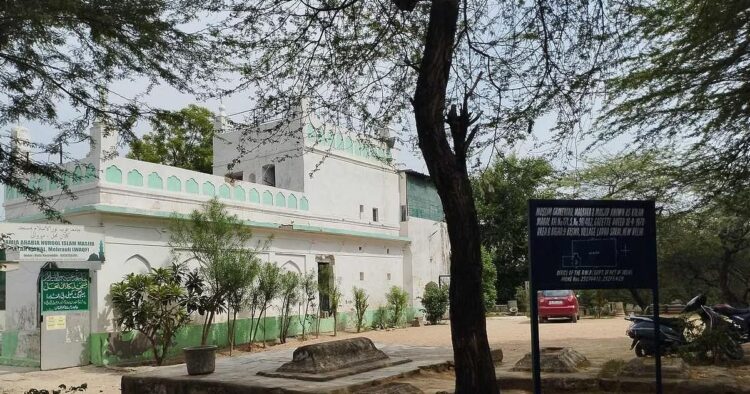The illegal encroachment and arbitrary claiming of properties of common people alongside government land by Waqf Boards has been a prominent menace across several states in India. Thousands of properties, from several districts of Uttar Pradesh to entire villages in Tamil Nadu are illegally occupied or have been claimed by Waqf Boards as its properties.
In a report prepared by the Joint Parliamentary Committee (JPC) on district-wise data on Waqf properties in Uttar Pradesh, it has been said that Ayodhya, Shahjahanpur, Rampur, Jaunpur and Bareilly districts have the maximum number of illegal Waqf properties on encroached government land, according to the media reports. In each of these districts, Waqf boards are claiming two thousand or more properties. These lands are in the category of public use in the revenue records. The JPC has submitted its report to Lok Sabha speaker Om Birla.
There are 2589 properties registered in Shahjahanpur in the records of the Waqf Board, out of which 2371 are government properties. 2363 out of 3365 Waqf properties in Rampur, 2116 out of 3652 in Ayodhya, 2096 out of 4167 in Jaunpur and 2000 out of 3499 Waqf properties in Bareilly are located on government land.
According to the media reports, there are a total of 57792 government properties in the state, which are registered as Waqf properties in the records of the Waqf Board. Waqf’s claim on government properties has also been found in the top 21 districts of Uttar Pradesh. The JPC report says that there are 1792 properties in Lakhimpur Kheri, 1778 in Bulandshahr, 1610 in Fatehpur, 1581 in Sitapur, 1575 in Azamgarh, 1497 in Saharanpur, 1471 in Moradabad, 1331 in Pratapgarh, 1293 in Agra, 1216 in Aligarh, 1251 in Ghazipur, 1154 in Meerut, 1150 in Sambhal, 1045 in Amroha, 1027 in Deoria and 1005 in Bijnor that are claimed as ‘Waqf property’, but are actually on government land.
There are 40 such districts in the state where hundreds of Waqf properties are registered in the records of the Waqf boards, but there is not a single document on transfer of property in the tehsil records. These districts are Firozabad, Mainpuri, Mathura, Aligarh, Etah, Kasganj, Ayodhya, Azamgarh, Ballia, Badaun, Shahjahanpur, Siddharthnagar, Bahraich, Balrampur, Gonda, Shravasti, Deoria, Kushinagar, Maharajganj, Jalaun, Lalitpur, Auraiya, Farrukhabad, Kannauj, Kanpur Dehat, Hardoi, Rae Bareli, Bulandshahr, Ghaziabad, Hapur, Bhadohi, Mirzapur, Sonbhadra, Bijnor, Kaushambi, Prayagraj, Chandauli, Jaunpur, Varanasi, Mahoba.
Notably, in Mahoba, the Waqf Board have no record of any Waqf property in Mahoba and just one in Sonabhadra. However, the district-level gazette shows 245 properties in Mahoba and 171 properties in Sonbhadra as waqf. Last month, a government-ordered survey in Uttar Pradesh’s Kanpur revealed that there are 1670 Waqf properties in the district. Of these, 548 are built on government land.
There are 914 properties under the Sunni Waqf Board and 34 under the Shia Waqf Board in the Sadar tehsil, as per the survey report. In Ghatampur 189, 388 in Bilhaur, and 144 in Narwal. Most of the illegal waqf properties on government land are mosques, graveyards, shrines and mausoleums. As per the reports, 80% of these illegal waqf properties are used for Islamic religious purposes.

















Comments